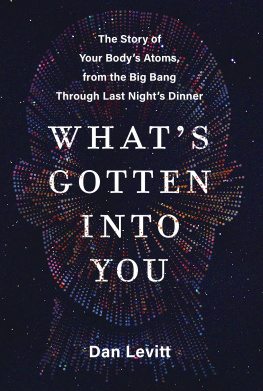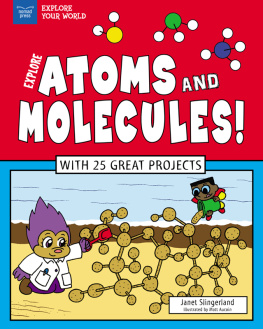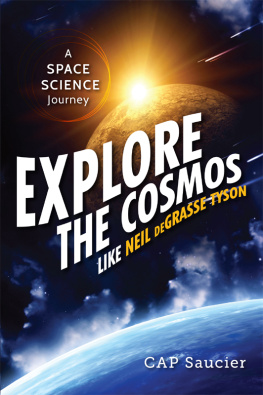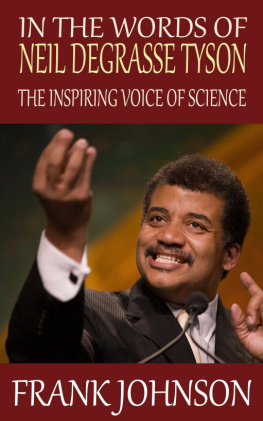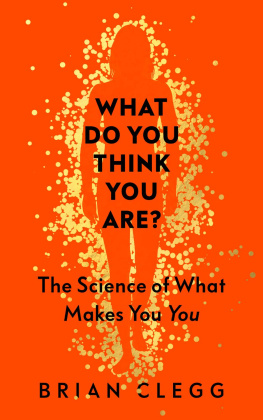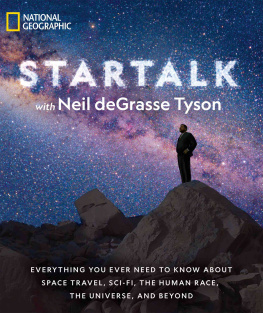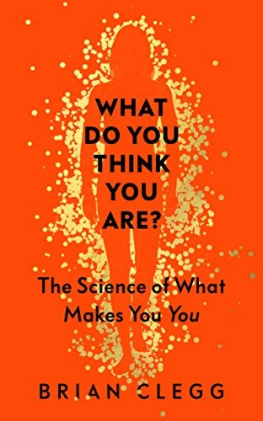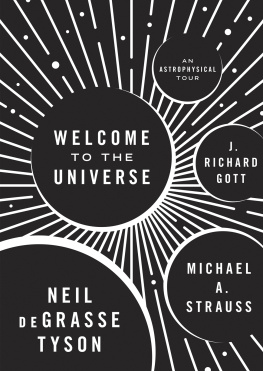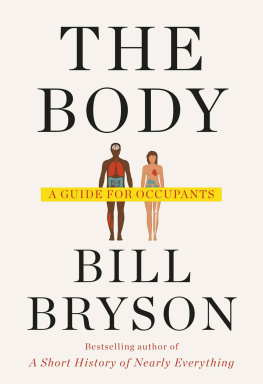Contents
Guide
To Ariadne, Zoe, Eli,
and my parents, Lore and Dave
We are an example of what hydrogen atoms can do, given fifteen billion years of cosmic evolution.
Carl Sagan
Introduction
$1,942.29 in the Bank
This book was inspired by a warning. When my teenage daughter decided to become a vegetarian, I recalled a caution I had received from m y grandfather who once owned a small hunting lodge and, at ninety, still loved wild game. He told me it was unhealthy not to eat meat. I also recalled that Henry David Thoreau once received a similar admonition from a farmer. You cannot live on vegetable food solely, for it furnishes nothing to make bones with. As the farmer spoke, Thoreau noted wryly, he stood behind sturdy oxen who pulled him and his lumbering plow along in spite of every obstacle with vegetable-made bones.
So when my daughter told me of her intentions, I was sympathetic. I knew her bones were not in grave danger if she became a vegetarian. But I began to wonderwhat exactly are we made of? Id studied science in college and spent years making science films. I thought I knew a fair amount. Yet I realized that I knew less about what I was composed of than I knew about what lay inside my computer or my car. So I began asking questions. What is inside us? That seems easy: muscle, organs, and bones. What are these made of? Cells, molecules, and atoms. Go on... what are they made of? Hmm. Thats a lot harder. Where did they come from? Im not sure. And how do we know any of this? Not a clue.
My questions sparked a flurry of googling, reading, and conversations with remarkably patient scientists. I soon found myself hooked by an epic tale. I discovered that our atoms have seen so much that, if they could speak, theyd probably never stop talking. Their history begins at the beginning of time. And their dramatic odyssey across billions of years was only revealed, I discovered, by many surprising, even shocking, discoveries.
As time went on, my investigation evolved into something deeper. Themes and connections emerged, and I discovered that taking the long view also revealed the majesty of our existence in a way Id never before appreciated. Carl Sagan once famously said we are made of star stuff.
This is the improbable story of how it happened.
The story begins with the truly bizarre discovery that all mattereverything around and within ushas an ultimate birthday: the day the universe was born. Well see how, on our atoms long strange journeys toward us, they were transformed into stars, helped assemble our planet, and then hunkered down while the newborn Earth endured unimaginable catastrophes. Once things calmed down, those dead atoms, in stunning recombinations, brought forth life, terraformed Earth, and created plantswhich at last made our own existence possible.
Finally, well see how our bodies transform the food on our dinner plates into us. Mind you, our own interiors are so vast that its difficult to fathom how bewilderingly complex we truly are. You are an ever-changing mosaic, a colony of thirty trillion cells,
In pursuing this strange tale, I came to understand that the mere fact that we can reconstruct the history of our atoms across billions of years is as deeply surprising as if we were able to piece together the history of a typhoon from the shadows of a few raindrops. But the clues were all around us; they had simply lain long hidden. They were to be found in the fleeting traces of invisible particles that rained down from space, in the fact that each element emits a unique set of wavelengths of light, in the unexpected timetables of comets returns to Earth, in the discovery that life flourishes in the bone-crushing depths of the dark ocean floor.
The stories of the scientists in these pages are as compelling as the discoveries they unearthed. Behind their unexpected findings were investigations marked by fierce rivalries, obsession, heartbreak, flashes of insight, and flukes of blind luck. Again and again, clues were overlooked until someone was willing to entertain ideas that everyone else knew were wrong.
I had no idea when I began that I would also learn about the unconscious workings of our brains that cloud our thinking. We all succumb to unconscious assumptions, called cognitive biases or thinking traps, that influence how we see the world. The negative bias, for instance, leads us to pay more attention to unpleasant events and helps explain why our media focuses on bad news. In these pages we will see that a small number of particular thinking traps repeatedly prevented whole communities of scientists from recognizing great breakthroughseven when confronted by overwhelming evidence. Well encounter six biases so frequently that Ive given them nicknames:
- The Too Weird to Be True bias
- The If Our Current Tools Havent Detected It, It Doesnt Exist bias
- The As an Expert, Ive Lost Sight of How Much Is Still Unknown bias
- The You Look For and See the Evidence That Matches Your Existing Theory bias
- The Worlds Greatest Expert Must Be Correct bias
- The Because It Seems Most Likely, It Must Be True bias
In a world rife with biases, the scientists who made great breakthroughs were tremendously brave to go against the grain. Some are well known. Most are not: like two women, one a Jewish physicist, the other, well, a Nazi, who collaborated to search for subatomic particles; the Austrian empresss personal physician who discovered photosynthesis; the hard-of-hearing chemist who discovered DNA over eighty years before Watson and Crick found its structure; or the renegade biochemist, ridiculed as a fraud and prophet of doom, who revolutionized our understanding of our cells. It seems progress in science often leaps out of dark corners and unexpected places.
Lets begin this strange history of your body and mine, then, with a man who always wore black.
Part I
The Journey Begins
From a Big Bang to a Rocky Home
In which we make the shocking discovery that all the particles within us were born in a single instant, discover their surprising nature, puzzle out the outlandish ways in which they became our elements, and learn how, improbably, a monstrous cloud of dust with our atoms scattered within it created a planet hospitable to life.
Happy Birthday to Everyone
The Priest Who Discovered the Beginning of Time
All great truths begin as blasphemies.
George Bernard Shaw
On a cold, uncharacteristically dry London day in September 1931, a short, stocky man with slicked-back hair, a piercing gaze, and a hell of a lot of nerve walked along Storeys Gate Street. He entered Central Hall, Westminster, a large assembly place near Westminster Abbey. Its hard to imagine that this man, a thirty-seven-year-old Belgian professor of physics, did not feel some trepidation. The soaring dome of the Great Hall imposed grandeur on the proceedings: a celebration of the hundredth anniversary of the British Association for the Advancement of Science. Many of the worlds most eminent physicists were among the audience of two thousand to whom Georges Lematre was about to present a theory that bordered on the crackpot.
Lematre was not just a physicist and a mathematician, but a Catholic priest as well, and he was to speak in a session on a topic that physicists had just begun to grapple with: the evolution of the universe. Dressed in his black clerical garb and white collar, as if prepared to take confessions, he stepped to the podium and presented an idea that veered perilously close to theology. He had discovered, he claimed, a moment when the entire universe exploded out of a tiny primeval atom.
Many other speakers presented ideas that were also electrifying, to say the least. The famed astronomer James Jeans suggested that the universes days were numbered. The mathematician Ernest Barnes (himself an Anglican bishop) speculated that the universe was so vast, it must contain many inhabited worlds, and there must exist beings on some of them who are immeasurably beyond our mental level. But Lematres theory was the strangest of all. He claimed that physics could address almost the very instant of creation.

